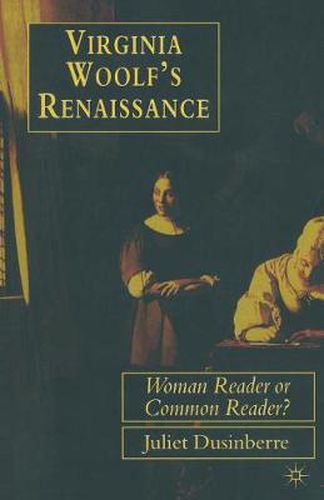Readings Newsletter
Become a Readings Member to make your shopping experience even easier.
Sign in or sign up for free!
You’re not far away from qualifying for FREE standard shipping within Australia
You’ve qualified for FREE standard shipping within Australia
The cart is loading…






This title is printed to order. This book may have been self-published. If so, we cannot guarantee the quality of the content. In the main most books will have gone through the editing process however some may not. We therefore suggest that you be aware of this before ordering this book. If in doubt check either the author or publisher’s details as we are unable to accept any returns unless they are faulty. Please contact us if you have any questions.
Dusinberre’s book explores Woolf’s search, in The Common Reader and other non-fictional writings, for an alternative literary tradition for women. Of equal interest to students of Virginia Woolf and of sixteenth- and seventeenth-century writing, it discusses Montaigne, Donne, Sir John Harington, Dorothy Osborne, Madame de Sevigne, Pepys and Bunyan, together with forms of writing, such as essays, letters and diaries, traditionally associated with women. Questions about printing, the body and the relation between amateurs and professionals create fascinating connections between the early modern period and Virginia Woolf.
$9.00 standard shipping within Australia
FREE standard shipping within Australia for orders over $100.00
Express & International shipping calculated at checkout
This title is printed to order. This book may have been self-published. If so, we cannot guarantee the quality of the content. In the main most books will have gone through the editing process however some may not. We therefore suggest that you be aware of this before ordering this book. If in doubt check either the author or publisher’s details as we are unable to accept any returns unless they are faulty. Please contact us if you have any questions.
Dusinberre’s book explores Woolf’s search, in The Common Reader and other non-fictional writings, for an alternative literary tradition for women. Of equal interest to students of Virginia Woolf and of sixteenth- and seventeenth-century writing, it discusses Montaigne, Donne, Sir John Harington, Dorothy Osborne, Madame de Sevigne, Pepys and Bunyan, together with forms of writing, such as essays, letters and diaries, traditionally associated with women. Questions about printing, the body and the relation between amateurs and professionals create fascinating connections between the early modern period and Virginia Woolf.